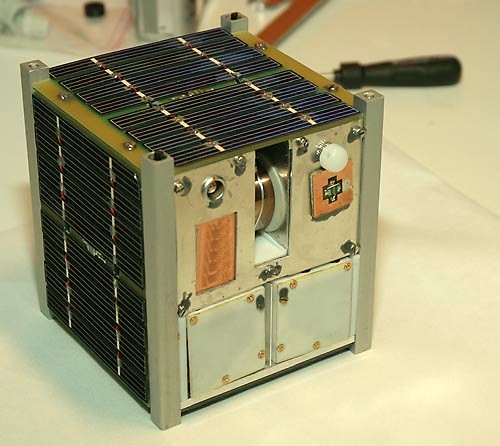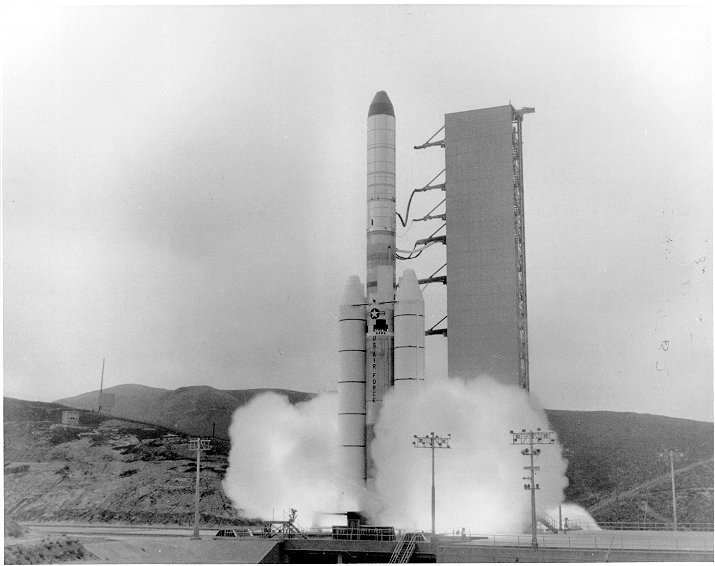|
PW-Sat2
''PW-Sat'' is a series of Polish CubeSats designed and built by students at the Warsaw University of Technology in conjunction with the Faculty of Power and Aeronautical Engineering of Warsaw University of Technology, the Space Research Centre of Polish Academy of Sciences, and the European Space Agency. As of January 1, 2024, there have been 2 ''PW-Sats'' with a third in development. The first ''PW-Sat'' was the first Polish artificial satellite which was launched 13 February 2012 from ELA-1 at Guiana Space Centre aboard Italian-built Vega launch vehicle during its maiden voyage. After their graduation, the team that developed the original ''PW-Sat'' have also worked to develop the subsequent missions, establishing a private company named PW-Sat to design and manufacturer the PW-Sats, all of which test novel deorbiting methods, with the overall goal of the program to develop solutions to space debris. PW-Sat1 Development The PW-Sat project was created in 2004 when group of s ... [...More Info...] [...Related Items...] OR: [Wikipedia] [Google] [Baidu] |
Solar Sail
Solar sails (also known as lightsails, light sails, and photon sails) are a method of spacecraft propulsion using radiation pressure exerted by sunlight on large surfaces. A number of spaceflight missions to test solar propulsion and navigation have been proposed since the 1980s. The two spacecraft to successfully use the technology for propulsion were IKAROS, launched in 2010, and LightSail-2, launched in 2019. A useful analogy to solar sailing may be a sailing boat; the light exerting a force on the large surface is akin to a sail being blown by the wind. High-energy laser beams could be used as an alternative light source to exert much greater force than would be possible using sunlight, a concept known as beam sailing. Solar sail craft offer the possibility of low-cost operations combined with high speeds (relative to chemical rockets) and long operating lifetimes. Since they have few moving parts and use no propellant, they can potentially be used numerous times for ... [...More Info...] [...Related Items...] OR: [Wikipedia] [Google] [Baidu] |
CubeSat
A CubeSat is a class of small satellite with a form factor of cubes. CubeSats have a mass of no more than per unit,, url=https://static1.squarespace.com/static/5418c831e4b0fa4ecac1bacd/t/5f24997b6deea10cc52bb016/1596234122437/CDS+REV14+2020-07-31+DRAFT.pdf , title=Cubesat Design Specification , publisher=California Polytechnic State University, San Luis Obispo, Cal Poly SLO , year=2020 , location=San Luis Obispo , pages=12 and often use commercial off-the-shelf (COTS) components for their electronics and structure. CubeSats are deployed into orbit from the International Space Station, or launched as secondary payloads on a launch vehicle. , more than 2,300 CubeSats have been launched. In 1999, California Polytechnic State University (Cal Poly) professor Jordi Puig-Suari and Bob Twiggs, a professor at Stanford University Space Systems Development Laboratory, developed the CubeSat specifications to promote and develop the skills necessary for the design, manufacture, and testing of ... [...More Info...] [...Related Items...] OR: [Wikipedia] [Google] [Baidu] |
Continuous Wave
A continuous wave or continuous waveform (CW) is an electromagnetic wave of constant amplitude and frequency, typically a sine wave, that for mathematical analysis is considered to be of infinite duration. It may refer to e.g. a laser or particle accelerator having a continuous output, as opposed to a pulsed output. By extension, the term ''continuous wave'' also refers to an early method of radio transmission in which a sinusoidal carrier wave is switched on and off. This is more precisely called interrupted continuous wave (ICW). Information is carried in the varying duration of the on and off periods of the signal, for example by Morse code in early radio. In early wireless telegraphy radio transmission, CW waves were also known as "undamped waves", to distinguish this method from damped wave signals produced by earlier ''spark gap'' type transmitters. Radio Transmissions before CW Very early radio transmitters used a spark gap to produce radio-frequency oscillations i ... [...More Info...] [...Related Items...] OR: [Wikipedia] [Google] [Baidu] |
SSO-A
SHERPA is a commercial satellite dispenser developed by Andrews Space, a subsidiary of Spaceflight Industries, and was unveiled in 2012. The maiden flight was on 3 December 2018 on a rocket, and it consisted of two separate unpropelled variants of the dispenser. Riding atop the launcher's final stage, SHERPA's release follows deployment of the primary mission payload for the dispensing of minisatellites, microsatellites, or s such as |
Vandenberg AFB Space Launch Complex 4
Space Launch Complex 4 (SLC-4) is a launch and landing site at Vandenberg Space Force Base, California, U.S. It has two pads, both of which are used by SpaceX for Falcon 9, one for launch operations, and the other as Landing Zone 4 (LZ-4) for SpaceX landings. The complex was previously used by Atlas and Titan rockets between 1963 and 2005. It consisted of two launch pads: Space Launch Complex 4 West (SLC-4W, formerly PALC-2-3) and Space Launch Complex 4 East (SLC-4E, formerly PALC-2-4). Both pads were built for use by Atlas-Agena rockets, but were later rebuilt to handle Titan rockets. The designation SLC-4 was applied at the time of the conversion to launch Titan launch vehicles. Both pads at Space Launch Complex 4 are currently leased by SpaceX. SLC-4E is leased as a launch site for the Falcon 9 rocket, which first flew from Vandenberg on 29 September 2013, following a 24-month refurbishment program which had started in early 2011. SpaceX began a five-year lease of Launch C ... [...More Info...] [...Related Items...] OR: [Wikipedia] [Google] [Baidu] |
Vandenberg Air Force Base
Vandenberg may refer to: * Vandenberg (surname), including a list of people with the name * USNS ''General Hoyt S. Vandenberg'' (T-AGM-10), transport ship in the United States Navy, sank as an artificial reef in Key West, Florida * Vandenberg Space Force Base, a United States military installation with a spaceport * Vandenberg (band), a Dutch hard rock band ** ''Vandenberg'' (album), their 1982 debut album * Vandenberg resolution, a United States Congress resolution passed in 1948 {{disambig ... [...More Info...] [...Related Items...] OR: [Wikipedia] [Google] [Baidu] |
Falcon 9
Falcon 9 is a Reusable launch system#Partial reusable launch systems, partially reusable, two-stage-to-orbit, medium-lift launch vehicle designed and manufactured in the United States by SpaceX. The first Falcon 9 launch was on June 4, 2010, and the first commercial resupply mission to the International Space Station (ISS) launched on October 8, 2012. In 2020, it became the first commercial rocket to launch humans to orbit. The Falcon 9 has been noted for its reliability and high launch cadence, with successful launches, two in-flight failures, one partial failure and one pre-flight destruction. It is the most-launched American orbital rocket in history. The rocket has two-stage-to-orbit, two stages. The first (booster) stage carries the second stage and payload to a predetermined speed and altitude, after which the second stage accelerates the payload to its target orbit. The Booster (rocketry), booster is capable of Vertical takeoff, vertical landing, landing vertically to fa ... [...More Info...] [...Related Items...] OR: [Wikipedia] [Google] [Baidu] |
Atmospheric Reentry
Atmospheric entry (sometimes listed as Vimpact or Ventry) is the movement of an object from outer space into and through the gases of an atmosphere of a planet, dwarf planet, or natural satellite. Atmospheric entry may be ''uncontrolled entry,'' as in the entry of astronomical objects, space debris, or bolides. It may be ''controlled entry'' (or ''reentry'') of a spacecraft that can be navigated or follow a predetermined course. Methods for controlled atmospheric ''entry, descent, and landing'' of spacecraft are collectively termed as ''EDL''. Objects entering an atmosphere experience Drag (physics), atmospheric drag, which puts mechanical stress on the object, and aerodynamic heating—caused mostly by compression of the air in front of the object, but also by drag. These forces can cause loss of mass (ablation) or even complete disintegration of smaller objects, and objects with lower compressive strength can explode. Objects have reentered with speeds ranging from 7.8&n ... [...More Info...] [...Related Items...] OR: [Wikipedia] [Google] [Baidu] |
MaSat-1
MaSat-1 (from the words ''Magyar'' and ''Satellite'', the first meaning " Hungarian" in Hungarian, ''maszat'', pronounced IPA �mɒsɒt meaning "smudge") is the first indigenous Hungarian satellite, developed and built by students at the Technical University of Budapest. The 1U CubeSat-type satellite was launched into low Earth orbit on 13 February 2012. The satellite provided telemetric data as well as VGA resolution color images at the 70 cm amateur radio wavelength (437.345 MHz frequency) received at the tracking center at Budapest. The center was tested on 31 March 2009 with the help of Charles Simonyi on board the International Space Station. With the successful launch of MaSat-1, Hungary became the 47th nation to orbit a satellite. Between 9 and 10 January 2015, the satellite reentered into the atmosphere. Operations Weeks following its launch, after the first high-quality images were available was it revealed to the public that a camera was on board. Technical ... [...More Info...] [...Related Items...] OR: [Wikipedia] [Google] [Baidu] |
ROBUSTA
ROBUSTA (Radiation on Bipolar for University Satellite Test Application) is a nano-satellite scientific experiment developed by the University of Montpellier students as part of a Centre National d'Études Spatiales (CNES) call for student projects in the field of orbital systems. The satellite is a Cubesat, the name given to a series of nano-satellites developed as part of student projects. The ROBUSTA mission is to check the deterioration of electronic components, based on bipolar transistors, when exposed to in-flight space radiation. The results of the experiment will be used to validate a new radiation test method proposed by the laboratory. Implementation of the project The duration of the ROBUSTA project is 6 years, beginning in 2006. The satellite was launched on February 13, 2012 on the Vega rocket's maiden flight, and reentered in the atmosphere in February 2015. An anomaly within the battery recharge system resulted in the loss of the satellite after a few days. S ... [...More Info...] [...Related Items...] OR: [Wikipedia] [Google] [Baidu] |
ALMASat-1
ALMASat-1 (ALma MAter SATellite) was a micro satellite developed by University of Bologna for demonstrative purposes to benefit Earth observation missions. The project was funded by Italian Ministry of Research. About the satellite The satellite was made from high quality aluminium and reinforced with eight stainless steel plates. Solar cells were mounted on four sides of satellite for providing the power required for satellite operation. Mission The work on development of ALMASat was started in 2003. It was expected to be launched into orbit on a Dnepr rocket. Later it was launched by Vega launch vehicle with other satellites on board. The ALMASat-1 was a microsatellite having a cuboidal structure, meant for a demo purpose, it accommodated payloads of different sizes and power requirements. The main purpose of ALMASat-1 was to test the 3-axis pointing accuracy for the future satellite launches. Launch ALMASAT-1 was launched by Vega launch system on February 13, 2012, from Kour ... [...More Info...] [...Related Items...] OR: [Wikipedia] [Google] [Baidu] |
LARES
Lares ( , ; archaic , singular ) were Tutelary deity#Ancient Rome, guardian deities in ancient Roman religion. Their origin is uncertain; they may have been hero-ancestors, guardians of the hearth, fields, boundaries, or fruitfulness, or an amalgam of these. Lares were believed to observe, protect, and influence all that happened within the boundaries of their location or function. The statues of domestic Lares were placed at the table during family meals; their presence, cult, and blessing seem to have been required at all important family events. Roman writers sometimes identify or conflate them with ancestor-deities, domestic Penates, and the hearth. Because of these associations, Lares are sometimes categorised as household deity, household gods, but some had much broader domains. Roadways, seaways, agriculture, livestock, towns, cities, the state, and its military were all under the protection of their particular Lar or Lares. Those who protected local neighbourhoods (''V ... [...More Info...] [...Related Items...] OR: [Wikipedia] [Google] [Baidu] |





